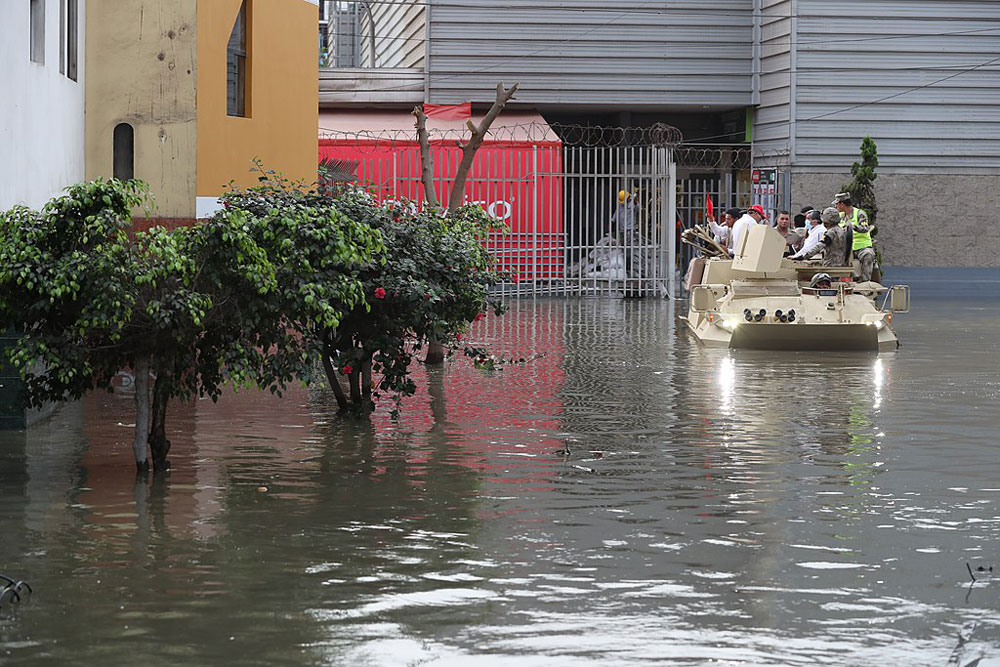
June 10, 2019; Fast Company
Damage from 14 natural disasters, including hurricanes and wildfires, devastated many areas of the US in 2018 to a cost of $91 billion. Combining that with 2017, which was a record-setting year for major natural disasters, there were 30 major natural disasters, each dealing more than $1 billion in damages. Hurricane Michael alone is estimated at around $25 billion, and California’s wildfires at $12 billion.
Given that both stronger hurricanes and more widespread fires are results of changing weather patterns, and that these most recent disasters have been catastrophic in both geographic size and impact, it leads to the perspective that climate change is a fundamental challenge to the entire philanthropic and nonprofit world. The Center for Disaster Philanthropy at Indiana University recently published a study, “US Household Disaster Giving in 2017 and 2018,” that analyzes the current picture of philanthropy associated with natural disasters.
The study considered many questions: How does disaster giving impact other giving? Is there a relationship between being able to determine the effectiveness of the gift and the act of giving? How much do people give? What motivates people to give to disaster aid relief?
Approximately 30 percent of American households made a disaster-related donation in 2017 and 2018. Just over 60 percent of those who donated made both financial and in-kind offerings. (Compare this to the approximately 50 percent who gave after Katrina in 2005, and the 75 percent who donated after the 9/11 attack.) About 12 percent of all US households helped by volunteering following disasters in the two years studied.
Sign up for our free newsletters
Subscribe to NPQ's newsletters to have our top stories delivered directly to your inbox.
By signing up, you agree to our privacy policy and terms of use, and to receive messages from NPQ and our partners.
The top two factors that drive disaster giving, according to the report, are the scale of the event and some kind of personal connection to it. (A strong relationship was found to exist between giving to major natural disasters and whether “someone we know was directly affected by disasters.”) Others include the number of people affected, the reputation of the recipient organization, and the amount of media coverage the event gets. On the list of reasons for not giving to disaster aid efforts, the top two spots were held by “not being asked to give” and “already financially committed to other charitable causes.” Each was chosen by around 20 percent of respondents.
Does giving to disasters impact other donations? Thirty-five percent of the donor households in 2018, and 37 percent in 2015, gave to both disaster-related and non-disaster-related causes. More than 75 percent of the respondents stated that giving to disaster relief did not change the amount they give to other causes.
Examining the methods of giving, only 10 percent used crowdfunding while nearly twice as many gave via an organization’s website or other online platform. Giving by check or cash (not credit cards) surprisingly accounted for over half of the donations. When asked about their perception of crowdfunding for disaster giving, 54 percent agreed with the statement, “I am concerned about the transparency or accountability of disaster-related projects on crowdfunding platforms.”
Lastly, the study examined volunteering, with or without donating funds. While 60 percent of US households did not give or volunteer, 28 percent donated to disaster relief but did not volunteer, three percent volunteered but did not donate, and nine percent both donated and volunteered.
Implications for the larger nonprofit sector include exploring the public’s opinions toward crowdfunding, motivations for giving or not giving time or money, and how to communicate the impact of gifts on disaster relief.—Jeanne Allen












